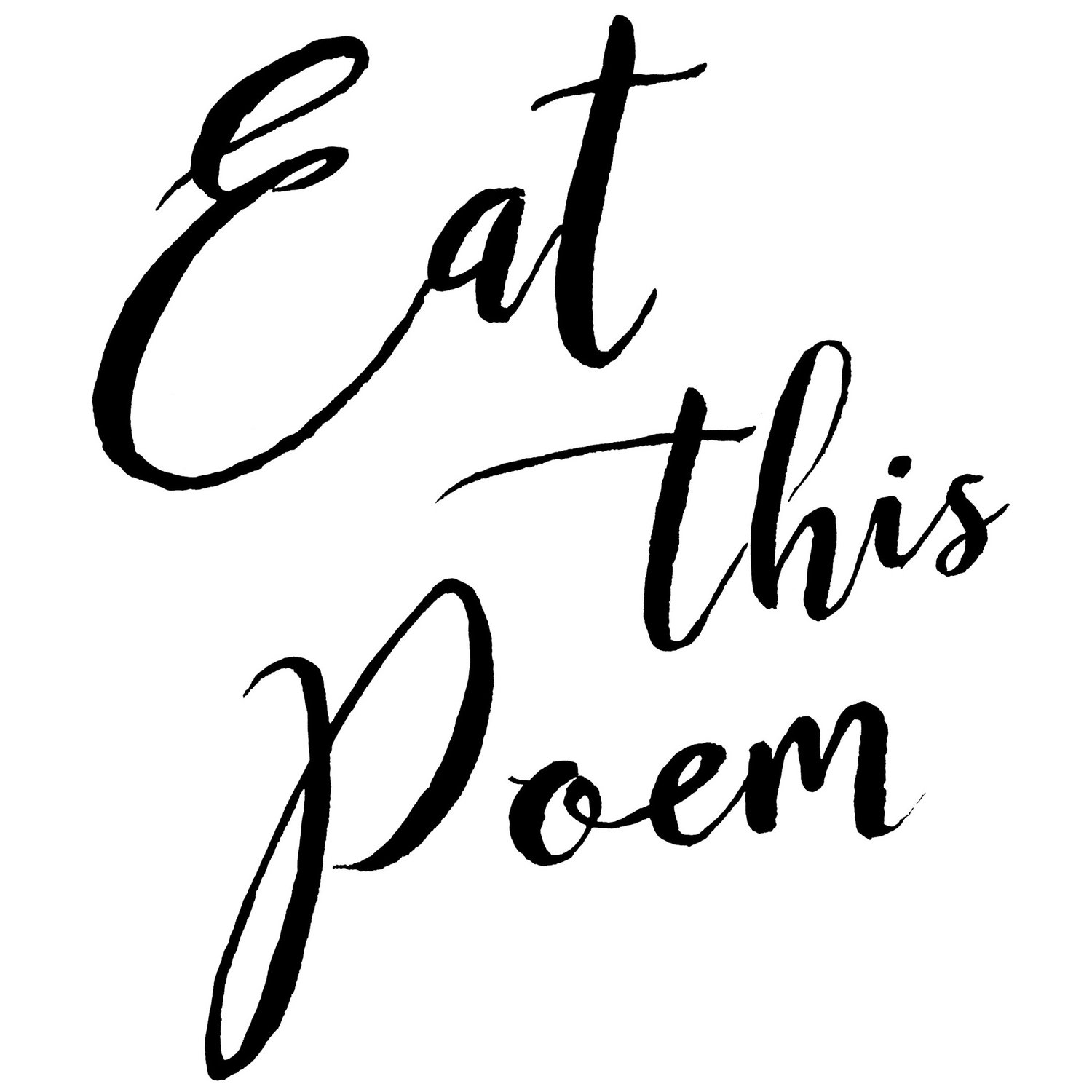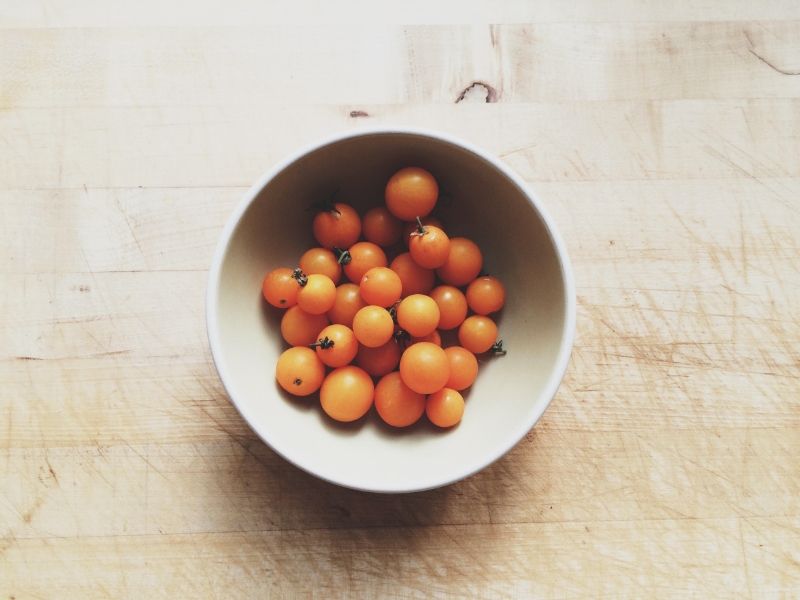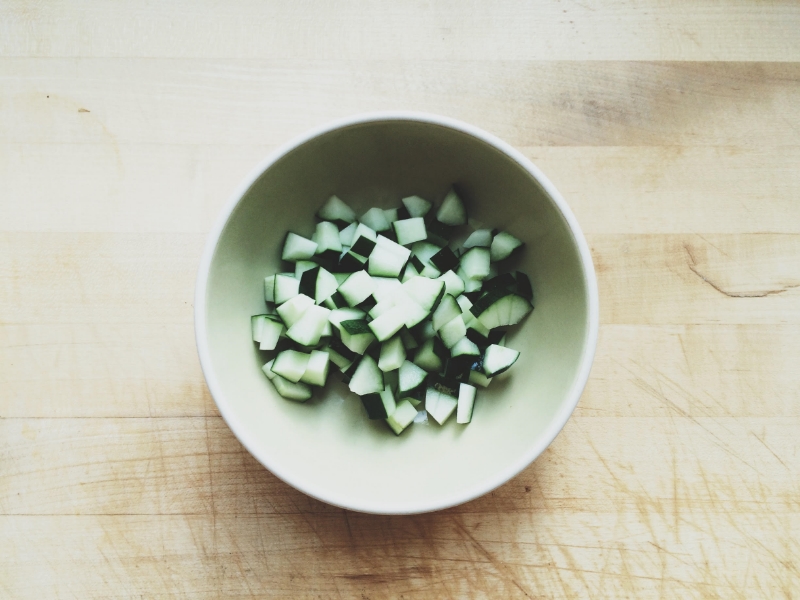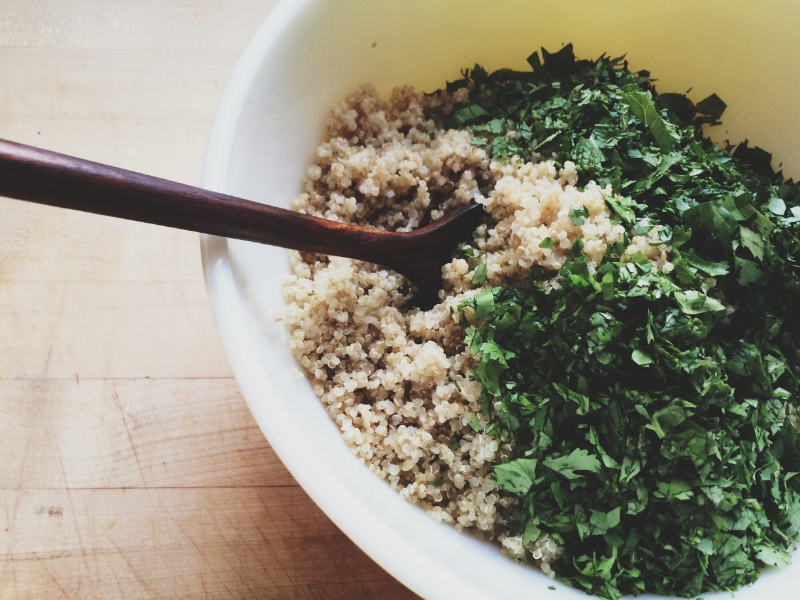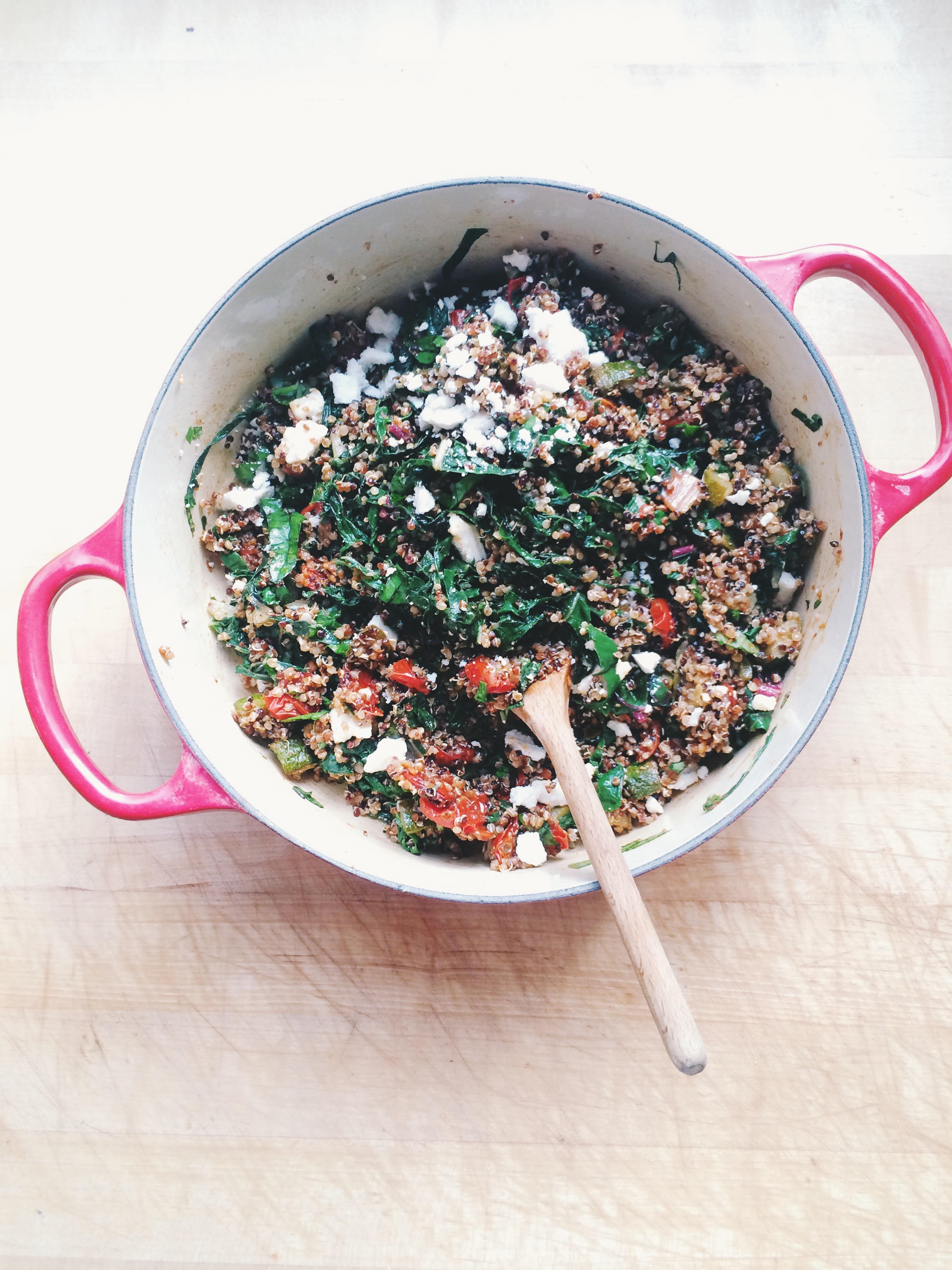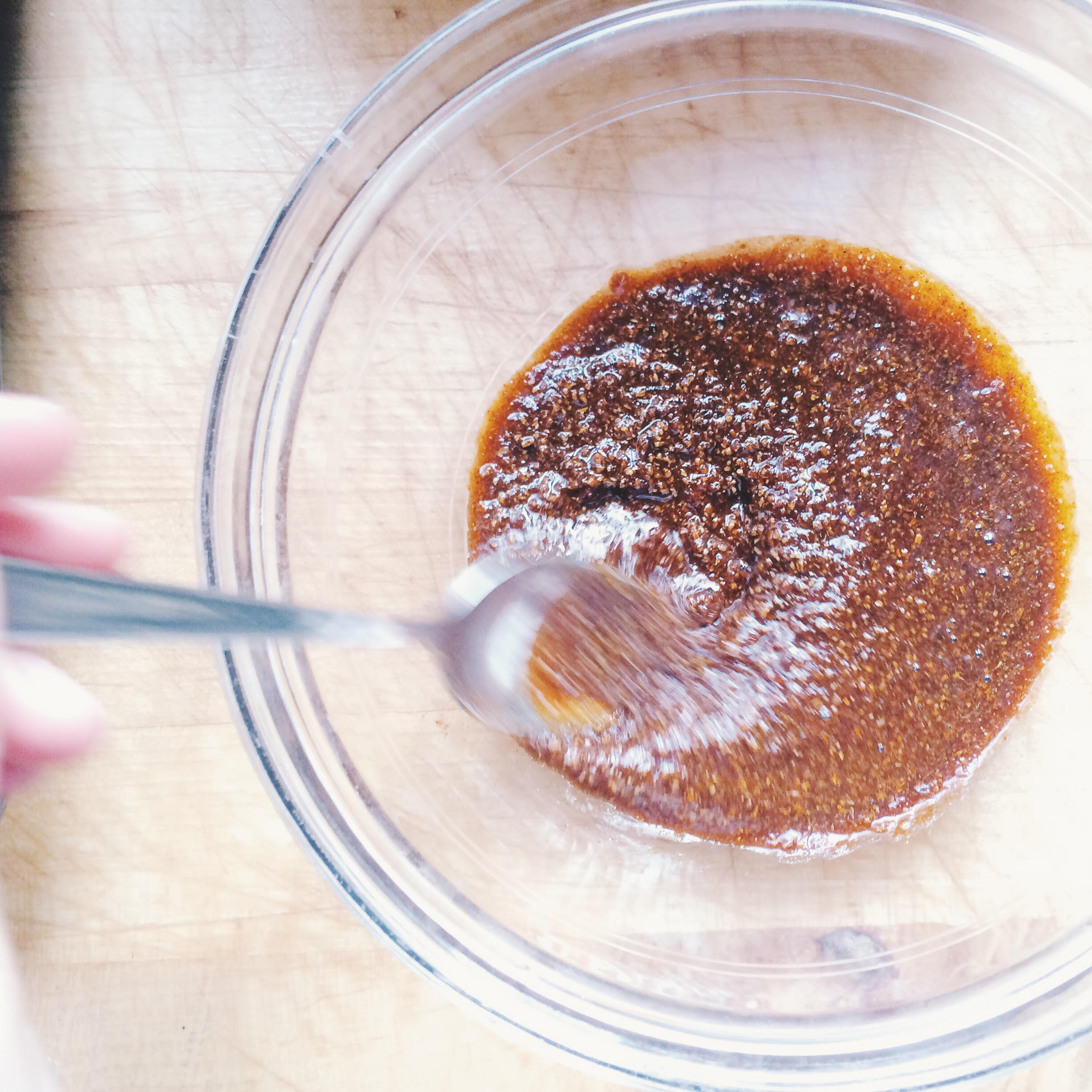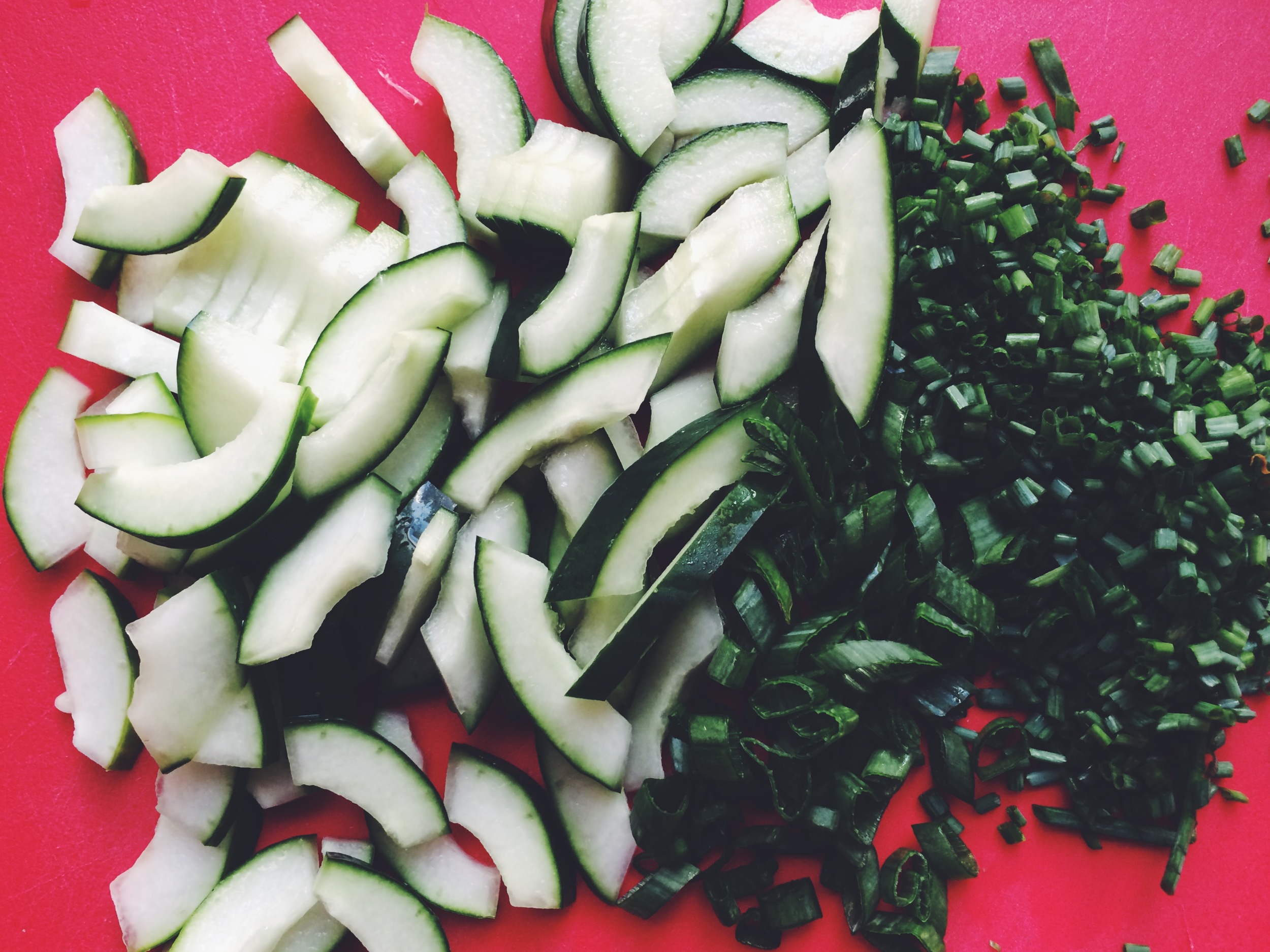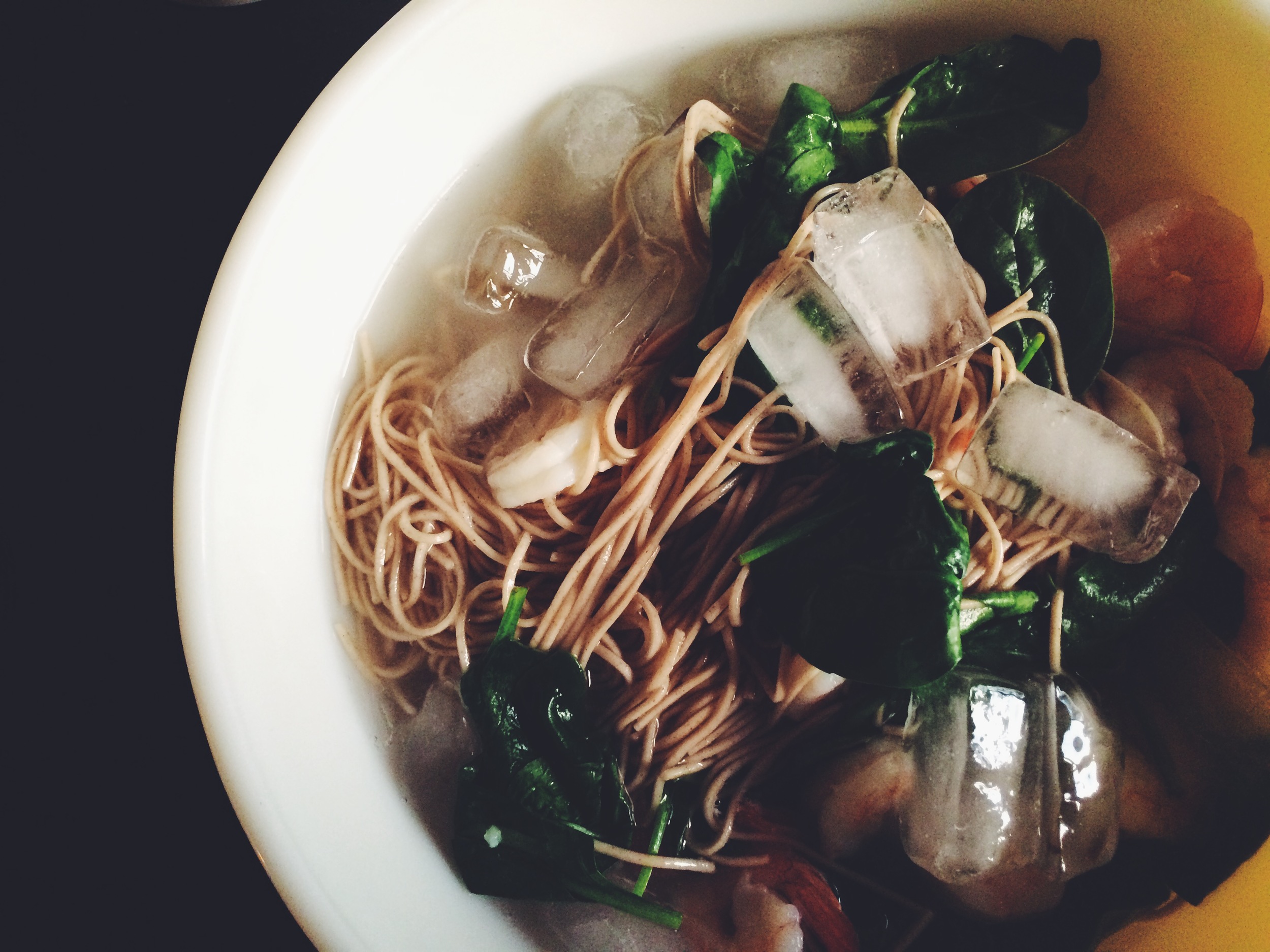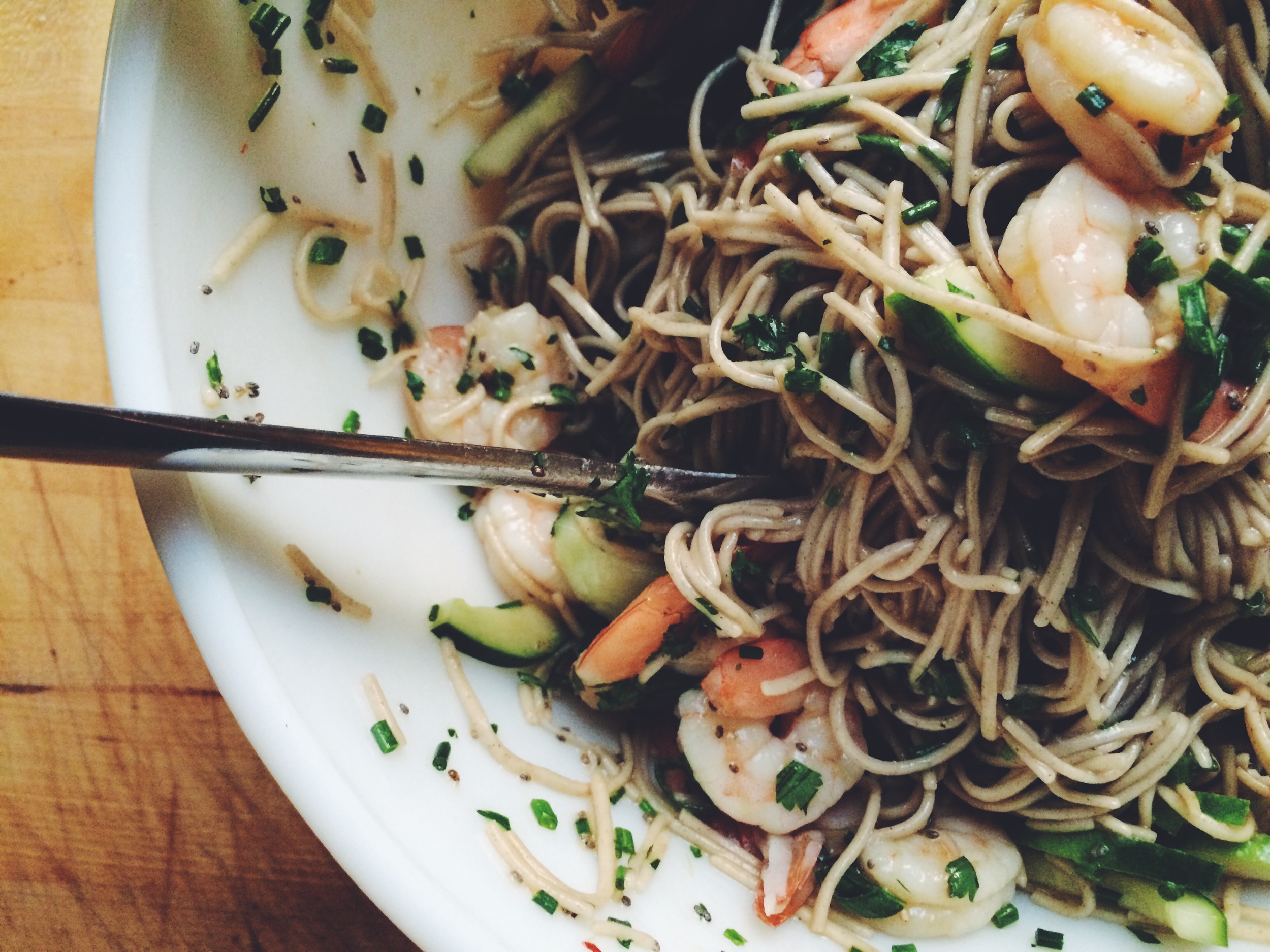I emerged from a nap, a small luxury, about a week before Henry was born. The house had just been cleaned, which meant the kitchen was a blank slate. Empty, with late afternoon sunlight streaming in. I pulled out my largest bowl, a collection of herbs, and the remaining vegetables in the refrigerator that needed a home.
Make something out of nothing. Tamar Adler's words were fresh in mind. When I first read An Everlasting Meal, this idea clung to me. It appears suddenly on Friday evenings, when I'm deciding between going out and staying in, realizing I didn't quite plan for the end of the week, but feeling up to the challenge of scrounging around in the fridge and pantry and putting together a meal.
Lately, these four words have been a companion of mine in the kitchen, and I often turn to them as one would a mantra or favorite quote written on the chalkboard. Because the words stay with me, I proceed to follow their advice, relying on instinct and memory and only a small amount of knife skills.
The words appear as a simple nudge, and they are, in one way. In another way, though, they are a call to pursue the instinctual piece of yourself as a cook which can be frightening, depending on your mood or comfort level. The words are gentle, but they guide us to an interior part of ourselves, perhaps unexplored.
Like anything worth practicing, cooking is an important pursuit. If you're here now, reading this post, I'm inclined to think you agree with me. And that means sometimes we must go off on our own, remove recipes from our counters or phone screens, and just make something.
My something turned out to be a Moroccan-inspired quinoa salad. I often soak grains overnight, cook them, and assume they will be used, which they usually are. So I did some of the preparations already, having cooked two cups of quinoa earlier that morning, but I didn't decide what to add to the bowl until the moment when I pulled out my knife, sharpened it, then proceeded to open the refrigerator and pull out what remained from the week.
There was half a cucumber, a cup of cherry tomatoes I was protecting from summer fruit flies, half a bunch of kale, three different herbs (mint, parsley, cilantro), a box of chickpeas, a handful of golden raisins leftover from the granola I baked two days before. To make the dressing, I reached for cumin, lemon, shallot, mustard, honey, oil.
In keeping with the theme of trust and instinct, I cannot offer a recipe. I've listed my ingredients, and I trust you. You know how to whisk a vinaigrette and add more honey if it's too tart. You know how to chop all the greens at your disposal, gather a pile of grains. I know the same, because I peeled, chopped, sliced, whisked. I tossed well, coating every grain, tasted for salt, tossed again, then stepped back from the counter, proud in some small way but mostly, deeply content. And grateful.
Grateful for a quiet house, for the light, for the dog waiting by my feet should a piece of cucumber spill to the floor. Grateful for what was to come in just a few days, which would be more monumental that I could have ever prepared for. Grateful for sustenance and skill and the ability to make something when required. Or not even required. More simply, when needed.
